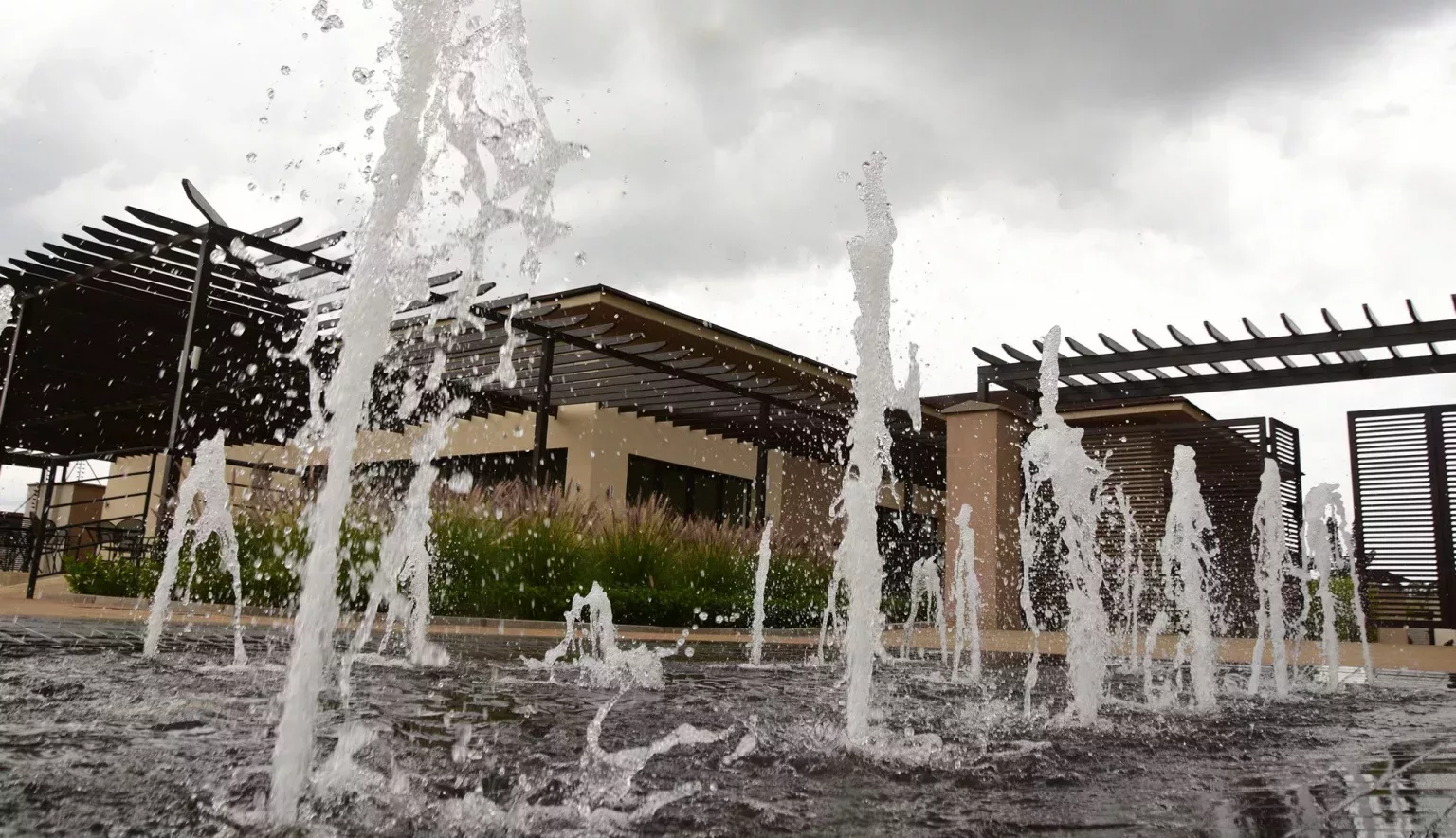DMJ Architects has been contributing to the development of Kenya and the wider region since it set up shop back in 1965.
DESIGN DURABILITY
Nairobi – the beating heart of Kenya and arguably East Africa’s most metropolitan city.
Full of culture and charm and sat on the doorstep of a magnificent national park, the capital is an alluring place to visit and live.
For Simon Johnson, born and raised in Kenya and now Owner of local practice DMJ Architects, 1978 marked a return to the city he loves.
“Nairobi, in particular, is a very cosmopolitan place,” he says. “It is not only the base for several African organisations, but also hosts the United Nations’ environmental agency.
“This means there are even more different nationalities represented here. I find this mixture of people, together with a good climate and places to visit, make it a tremendous place to live.”
This is not to suggest Nairobi, and indeed Kenya more widely, is free from developmental challenges, however. Established in 1965, DMJ is a tightknit team of architects and support staff which has witnessed first-hand the nuances of the country’s progression.
“Kenya is currently catching up on 30 years of little development,” adds Johnson, who moved back to the country after spending time in the UK and Qatar. “Sadly, this is being done without enough thought. Greedy developers pay too much for land and then persuade the government to allow them to overdevelop properties to make a profit.
“This leads to a lot of the wrong kind of development when what is actually required are more schools, clinics, hospitals and housing for the massive population that is growing up here. Kenya leads in this respect, but Tanzania and Uganda suffer from the same problem.”
DMJ’s remit is to plan and design responsible projects that provide a genuine contribution to the location in which they are based.
Over the years, the company has been involved in developments spanning hospitality, commercial, industrial, research and educational facilities.
Today its work concentrates on Kenya and Tanzania but in previous times the firm operated extensively in Ethiopia and Uganda and set up a now autonomous firm in Botswana, with projects also carried out in Somalia and Sudan.
Recently, DMJ has also been involved with schemes in Rwanda, Ghana and Namibia.
“From its outset, DMJ has carried out masterplans and studies for future work,” says Johnson. “This includes the Arthur D. Little Ethiopia Tourism Study, ILRAD at Kabete, the USIU Complex at Kasarani and the Primate Research Center in Ololua Forest.
“More recently we were involved with the Rift Valley Academy at Kijabe and affordable housing schemes in Namibia and Ghana.”
SETTING STANDARDS
Johnson’s own passion for architecture and design emanates from renowned New Zealander Amyas Connell, who made his name in the UK after winning the British Prix de Rome in Architecture while he was still a student in 1926.
“Amyas Connell was an old friend of my parents,” the CEO recalls. “His house was close by, and I was fascinated from a young age by him. He was my early inspiration.”
This influence has worn off on Johnson and DMJ, the firm developing its own hallmark of quality and unique approach to its designs.
“I would like to think that the firm has made a name for itself by designing projects that take particular note of the environment in which they are set,” he explains. “And at the same time these projects use materials and techniques that are a blend of not only local availability, but also what is technically possible using international methods.
“Rather than produce a hotchpotch of images blended on a computer, we like to provide elegant economic and well-constructed solutions to solve our clients’ needs. This has also meant developing good relationships with our co-consultants – engineers, quantity surveyors, interior designers and landscape architects.
“I am often amused to see other projects that show a familiarity with the DMJ approach. I take this as significant praise from others in our profession.”
Such a standing would not be possible were it not for Johnson and the firm being able to find the right people to work with, the Owner admitting that recruiting requisite skills is a routine challenge.
He observes a significant number of Kenyan architects who have gained experience abroad, helping to improve the nation’s pool of knowledge (provided they return). Working with students is one way of ensuring talent remains in the country, and DMJ has a track record of cooperating with universities.
Whatever the mix of colleagues and suppliers Johnson has worked with over the years, it is this people-centric element of the job that he enjoys the most.
“Perhaps the most important aspect of working here has been the immense pleasure derived from all those I interact with,” Johnson adds.
“Architecture is very much a team effort. This applies to the clients who commission projects and with whom we develop briefs together, to the team in the office and the consultants who help us develop our designs, and to the contractors and suppliers whom we rely on to turn our ideas into reality.”
PORTFOLIO PRIDE
The reality can be seen in DMJ’s illustrious portfolio of completed projects.
Covering a wide scope both in terms of building type and East African geography, this constantly evolving archive of work is a source of great pride for Johnson, so much so that he struggles to pick out a favourite project.
“This is always a difficult question as most jobs have their magic aspects,” he says. “When I first arrived back in Nairobi, I was put to work on the Benedictine Monastery on Thika Road and was able to meet the Missionary Benedictine Sisters. I am very proud to have contributed to many projects – clinics, schools, convents – with them.
“The Indian Ocean Beach Club that we designed with Mruttu Salman Associates was another highlight. I have also enjoyed the projects I have worked on with the Laxmanbhai family. From Kenindia flats to Langham Court, these are all schemes that I am enormously fond of.”
In terms of current projects, Johnson points to the residential development at Galleria Gardens, Langáta, in Nairobi. This is an upmarket 50-house complex which will be built in two phases, the first being completed in 2018.
A key feature is the noise and traffic damping effect of a surrounding commercial development, ensuring privacy for homeowners and providing important office facilities for companies looking to invest in the Kenyan capital.
“This has been a fascinating chance to build houses that meet aspirational trends for the Kenyan market,” Johnson adds, “blending modern houses in an environment that makes the landscaping an important element of the homes.”
In the realm of hospitality, DMJ is currently working with the Sarova Group to adapt its landmark Nairobi hotel, the Sarova Stanley, so it can meet new fire and safety regulations.
This has involved close cooperation with the engineering group, and Johnson is quick to pay tribute to the great number of suppliers that help ensure its work is completed professionally and on time.
“Reliable suppliers and contractors are what make projects work,” he says. “Architects design but unless they have access to reliable suppliers and, just as importantly, good contractors, their schemes will never succeed. I like to think that over the years DMJ has had access to both and has always enjoyed their support.”
CAUTIOUS OPTIMISM
This formidable track record will no doubt serve DMJ well in securing a solid pipeline of future work, an invaluable asset to draw on given the undoubted challenges still facing Kenya’s development.
Johnson explains: “My biggest concern for the region is the amount of resources in Kenya that are being soaked up by the Standard Gauge Railway project. This is definitely affecting the orderly development of the country.
“I also am concerned about the lack of planning in Nairobi. If the city is to develop to its full potential, it needs its leaders to properly understand the need for an overall concept for the city’s development beyond individual projects.”
However, in spite of these observations the Owner is confident about the future for DMJ and the role it can play in helping Nairobi, Kenya and the wider region to grow sustainably.
He concludes: “We are just beginning to see the work flow again after two difficult years following Kenya’s elections.
“We have two educational masterplans we are working on with Kenton College and Kitengela International School. We also have a large housing estate near Tatu City that will be complicated to manage. We have the Sarova Stanley hotel to make safer.
“In Tanzania, we are working on a project in the Serengeti. In Rwanda, we have a camp to design near the Virunga Forest. We shall not be bored!”
































